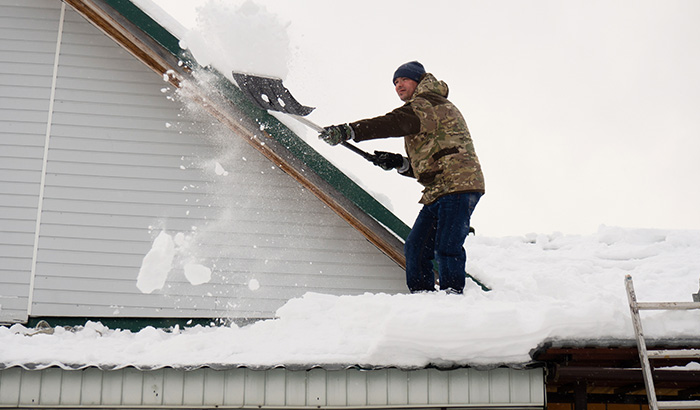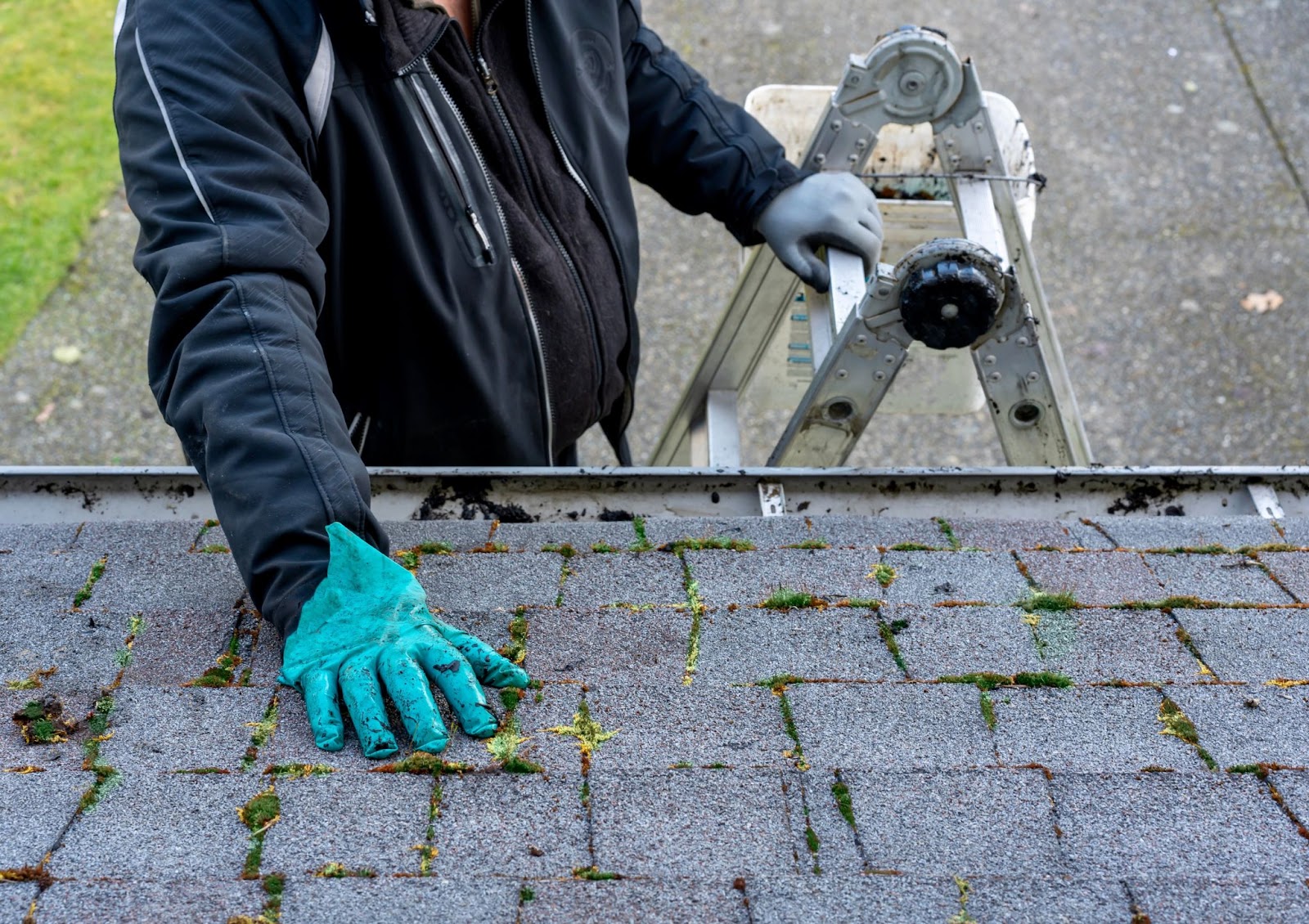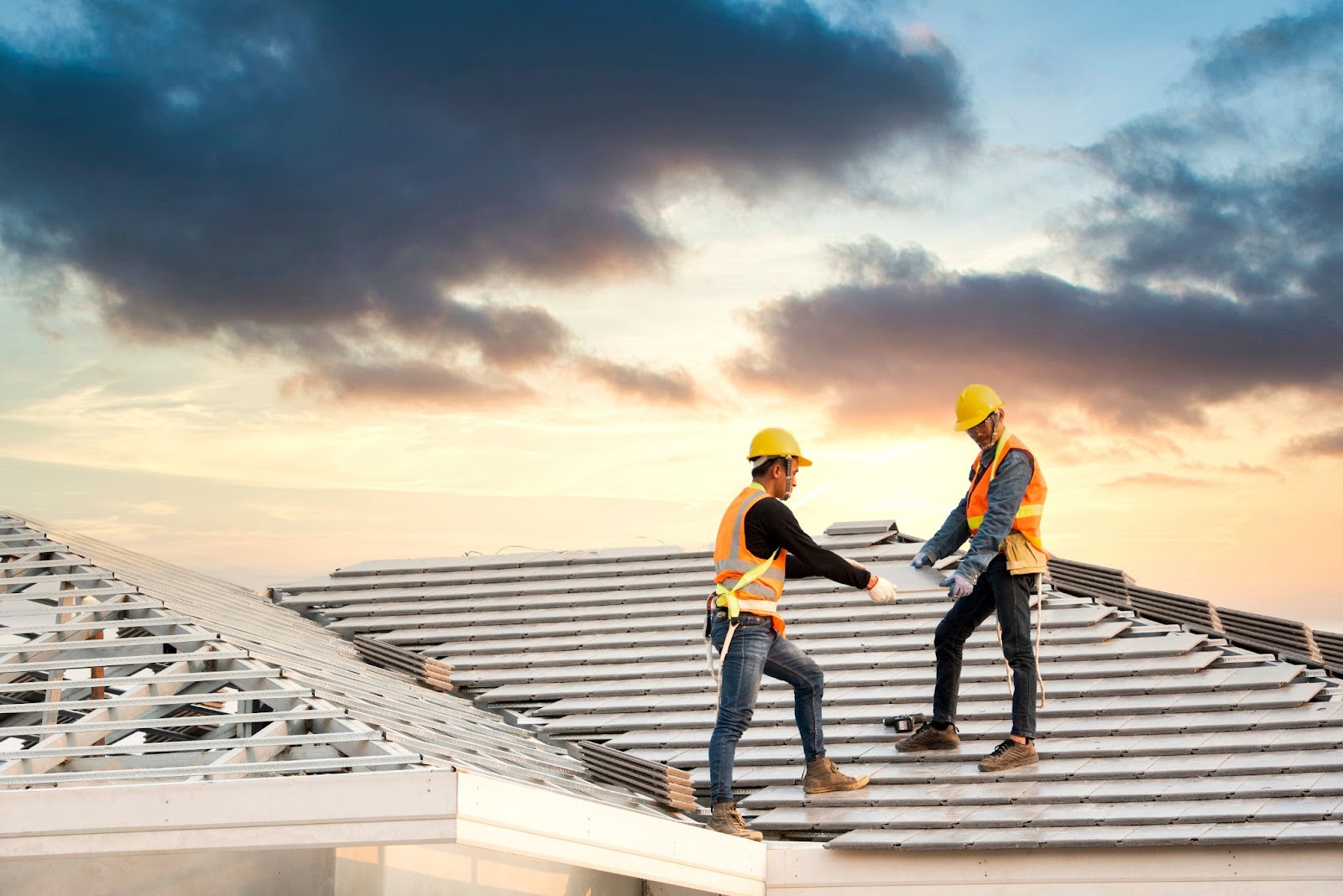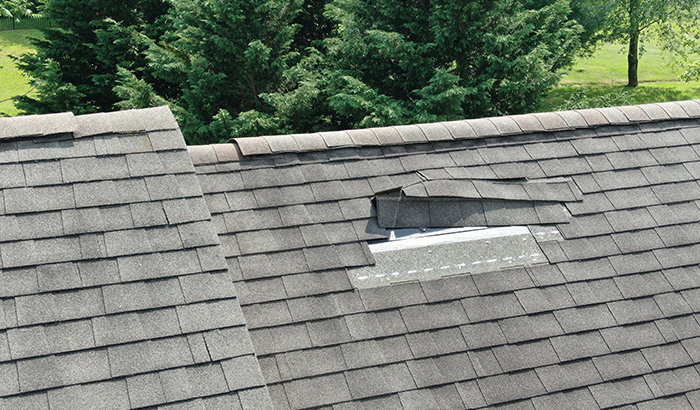Winter presents unique challenges for homeowners, especially when it comes to maintaining the integrity of their roofs. While picturesque, the season’s snow and ice pose serious threats to roof structures. These conditions lead to damage, such as ice dams, excessive load, and water leakage, potentially resulting in costly repairs and significant safety concerns.
This guide actively equips homeowners with essential knowledge and strategies to safeguard their roofs against the rigors of severe winter weather. Through a detailed exploration of preventative measures, regular maintenance practices, and responsive actions, we aim to provide a comprehensive approach to roof protection.
Understanding these critical aspects is crucial for ensuring the durability and safety of your home during the winter months.
Let’s get started.
1. Regular roof inspections: key to early detection
- What to Look For: Regular inspections are vital. Check for cracked, missing, or damaged shingles, signs of wear around roof fixtures, and blocked gutters. Keep an eye out for sagging areas or spots where snow accumulates unevenly, as these indicate structural issues.
- When to Inspect: Perform inspections in both fall and spring. The fall inspection prepares your roof for Winter, while the spring check-up assesses any damage incurred.
- How to Inspect Safely: Use a ladder securely and never walk on a wet or frozen roof. Binoculars help inspect hard-to-reach areas.
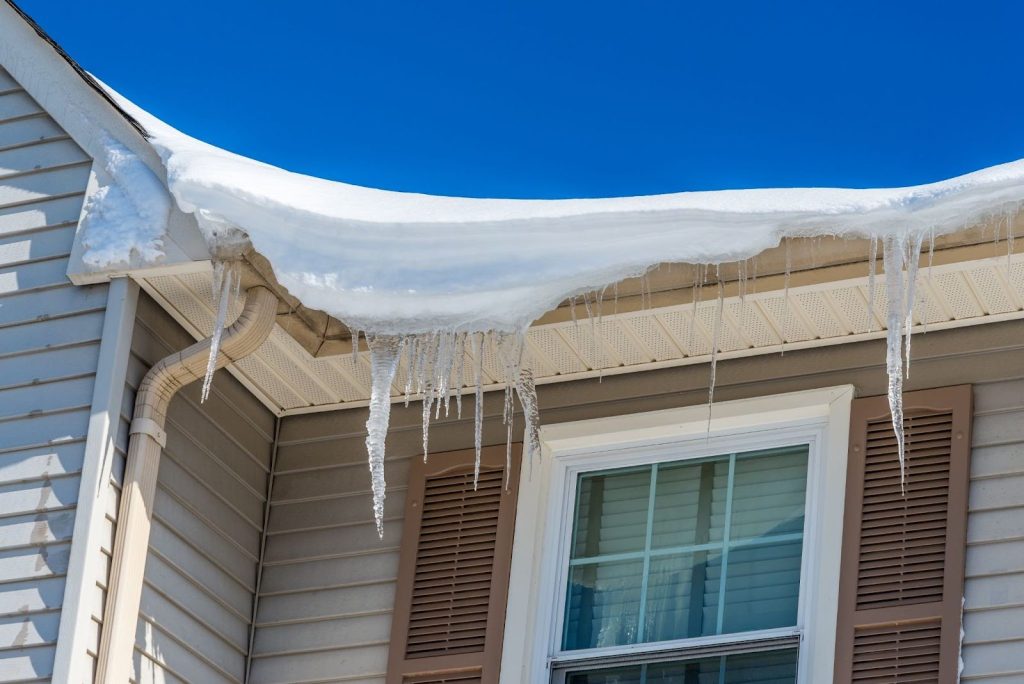
2. Gutter cleaning: preventing ice dams and water damage
- Importance: Clean gutters are crucial for water drainage. Clogged gutters impede water flow, leading to ice dams, which force water under shingles, potentially causing leaks.
- Best Practices: Clean your gutters in late fall and periodically throughout the Winter, especially after storms. Consider installing gutter guards to reduce debris accumulation.
- Safety Tips: Use a stable ladder and wear gloves. Be cautious of power lines.
3. Trimming tree branches: avert potential hazards
- Risks of Overhanging Branches: Snow and ice weigh down overhanging branches, causing them to snap and fall onto your roof.
- Trimming Guidelines: Trim branches that hang over your roof. Do this in late fall before the first snow.
- Seek Professional Help: Hiring a professional arborist is safer for large trees or high branches.
4. Boosting attic insulation: combating heat loss
- Why Insulation Matters: Proper insulation prevents heat from escaping to your roof, where it can melt snow, leading to ice dams.
- Types of Insulation: Explore options like fiberglass, cellulose, or spray foam. Each has advantages regarding R-value (insulation effectiveness), cost, and installation requirements.
- Professional Assessment: Consider a professional energy audit to determine your attic’s insulation needs.
5. Enhancing attic ventilation: ensuring temperature uniformity
- Ventilation’s Role: Adequate ventilation keeps the attic and roof temperature uniform, reducing the risk of ice dams.
- Types of Vents: There are various types of vents – ridge vents, soffit vents, and gable vents. Your home might need a combination of these for optimal ventilation.
- Professional Evaluation: A roofing expert will assess your ventilation system and recommend improvements.
6. Installing heating cables: active ice dam prevention
- Function: Heating cables along the roof’s edge melt snow and ice, ensuring water flows off the roof instead of forming ice dams.
- Installation Tips: Install cables in a zigzag pattern along the roof’s edge and in gutters and downspouts. Make sure to use cables specifically designed for roof use.
- Electrical Considerations: Engage a professional for installation to ensure electrical safety and optimal functioning.
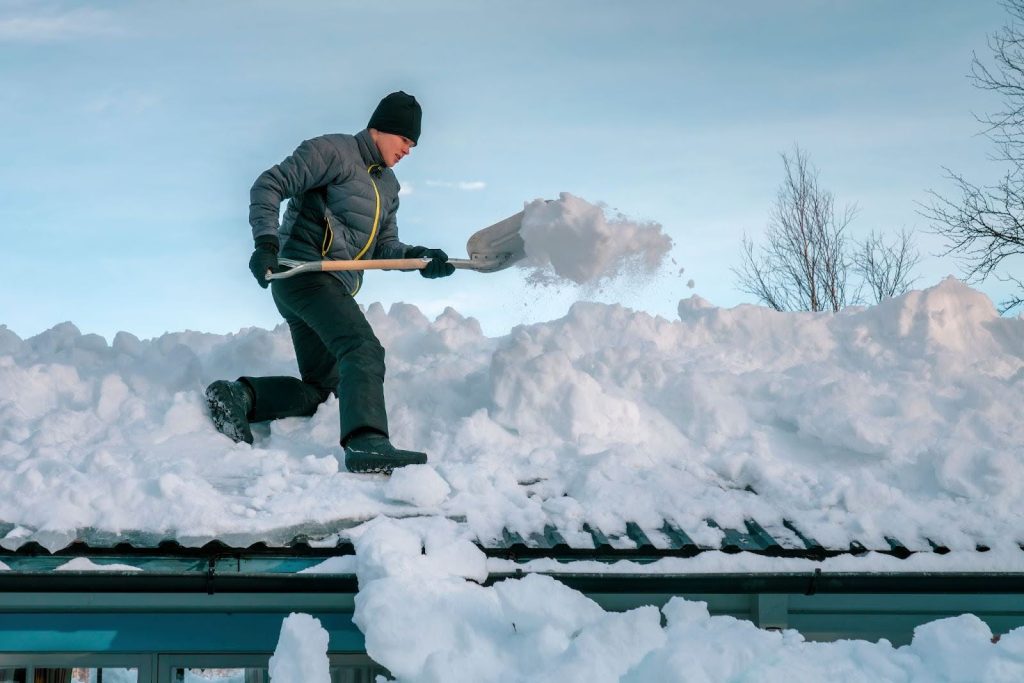
7. Utilizing a roof rake: safe snow removal
- Purpose: A roof rake removes snow from your roof, lessening the load and reducing ice dam risk.
- How to Use: Gently pull the rake down to remove snow, being careful not to damage shingles.
- Limitations: Only use the rake for reachable areas. Don’t climb onto the roof to remove snow.
8. Sealing attic bypasses: stopping warm air leaks
- Problem: Warm air leaks into the attic and causes uneven snow melt on the roof.
- Sealing Techniques: Use caulk or foam insulation to seal around attic penetrations like light fixtures, plumbing vents, and chimneys.
- Energy Efficiency: This also enhances your home’s overall energy efficiency by reducing heat loss.
9. Checking and repairing flashing: leak prevention
- Importance of Flashing: Flashing is the metal strip that seals and will protect your roof’s joints, especially around chimneys, vents, and valleys.
- Common Issues: Look for rust, cracks, or gaps. Improperly sealed flashing leads to leaks.
- Repair or Replace: Depending on the condition, flashing may need to be resealed, repaired, or replaced.
10. Professional roof inspections: expert evaluation
- Benefits: Professional roofers identify issues that might be invisible to the untrained eye.
- When to Schedule: Ideally, have a professional inspection annually or after a severe weather event.
- Expert Repairs: Professionals also undertake necessary repairs safely and efficiently.
11. Installing snow guards on metal roofs: preventing avalanches
- Purpose: Snow guards prevent large amounts of snow and ice from sliding off metal roofs suddenly, a phenomenon known as a roof avalanche.
- Types of Snow Guards: Options include pad-style guards and rail systems. The choice depends on your roof’s style and pitch.
12. Upgrading roofing material: long-term resilience
- Why Upgrade: Older or damaged roofs may benefit from more durable, modern materials.
- Options: Materials like metal, slate, or high-quality asphalt shingles offer better resistance to snow and ice.
- Cost vs. Benefit: Weigh the initial investment against long-term maintenance and energy efficiency savings.
13. Clearing ice around downspouts: ensuring proper drainage
- Issue: Ice buildup blocks downspouts and prevents melted snow from draining off the roof.
- How to Clear Ice: Use calcium chloride ice melter rather than rock salt, which damages shingles.
- Regular Checks: Monitor and clear ice buildup regularly throughout the Winter.
14. Avoid walking on the roof: minimizing risk and damage
- Dangers: Walking on your roof, particularly in Winter, is risky and can cause damage.
- Alternative: Hire professionals for any roof work during Winter. They have the right equipment and training for safe, effective work.
As we close this guide, it’s clear that effectively safeguarding your roof against severe winter conditions is not just a seasonal task, but a fundamental aspect of responsible homeownership. The array of strategies and tips detailed here goes beyond mere preventive maintenance; they are crucial steps in ensuring your home’s longevity, safety, and structural integrity.
While visually enchanting, Winter’s snow and ice may quickly escalate into significant problems for your roof. Issues like ice dams, heavy snow loads, and freeze-thaw cycles cause extensive damage, leading to costly repairs and potential safety hazards. However, these risks can be effectively managed and even prevented with the right approach and timely actions.
It is essential to understand the specific needs of your roof type, whether shingle, metal, or flat, and adopt tailored maintenance practices. For instance, installing snow guards on metal roofs prevents dangerous snow slides, while using a roof rake on shingle roofs prevents excessive snow accumulation.
Considering long-term solutions like upgrading to more durable roofing materials or improving overall roof design offers better resistance to severe winter elements and enhances your home’s energy efficiency.
Protecting your roof from Winter’s adversities requires vigilance, knowledge, and proactive care. By embracing these principles, you ensure that your roof stands as a steadfast barrier against the cold, safeguarding your home and providing comfort and security to you and your family. As the winter season unfolds, take pride in the peace of mind from knowing your home is well-equipped to face the frosty challenges ahead.
In cases where DIY measures are insufficient or unsafe, don’t hesitate to seek professional help. Roofing experts not only offer advanced insights into the condition of your roof but also provide specialized services that ensure your roof is winter-ready.
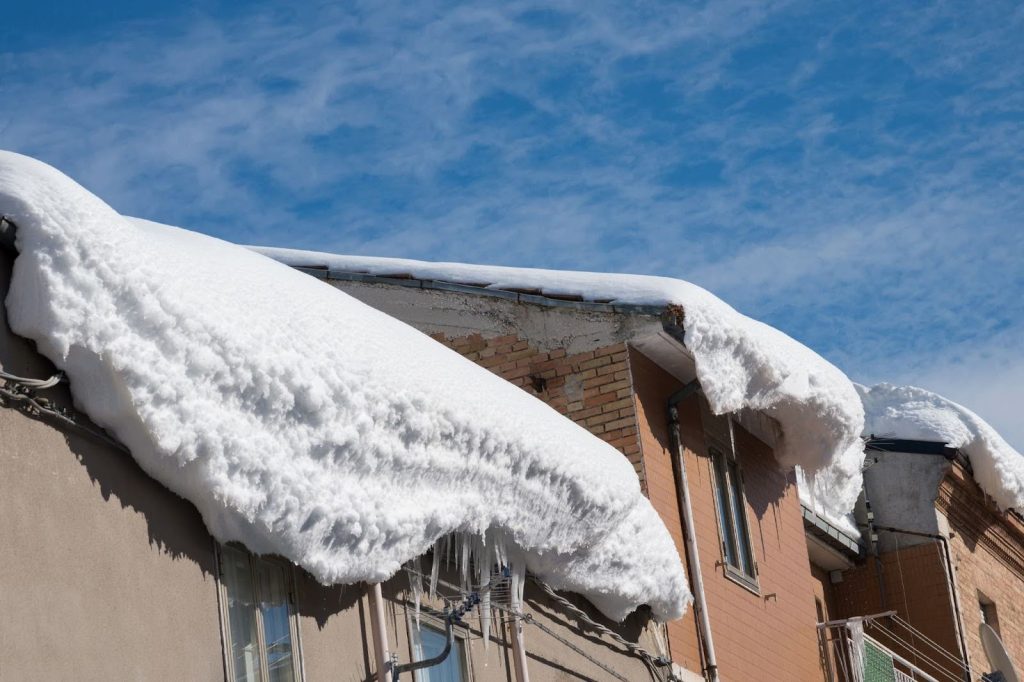
Protect Your Roof This Winter with We Do Roofing SLC!
Is it time to fortify your roof against the harsh winter conditions? Look no further than the seasoned professionals at We Do Roofing Salt Lake City. Renowned for our expertise in roof replacement, we’re the go-to choice in Salt Lake County for ensuring your roof is winter-ready.
At We Do Roofing SLC, we pride ourselves on being a trusted authority in roof replacement. Our licensed team, boasting over twenty years of industry expertise, is dedicated to providing top-tier roofing solutions. Whether for business premises or residential properties, our services encompass expert roofing repairs, new roof installations, and comprehensive roof replacements.
We are committed to serving the communities of Northern Utah, including Salt Lake City, West Jordan, Murray, and other neighboring areas. Contact us today if you’re seeking professional guidance and efficient services to prepare your roof for the winter season. We’re ready to provide a prompt and detailed quote, ensuring your roof is a sturdy shield against Winter’s demanding weather.

